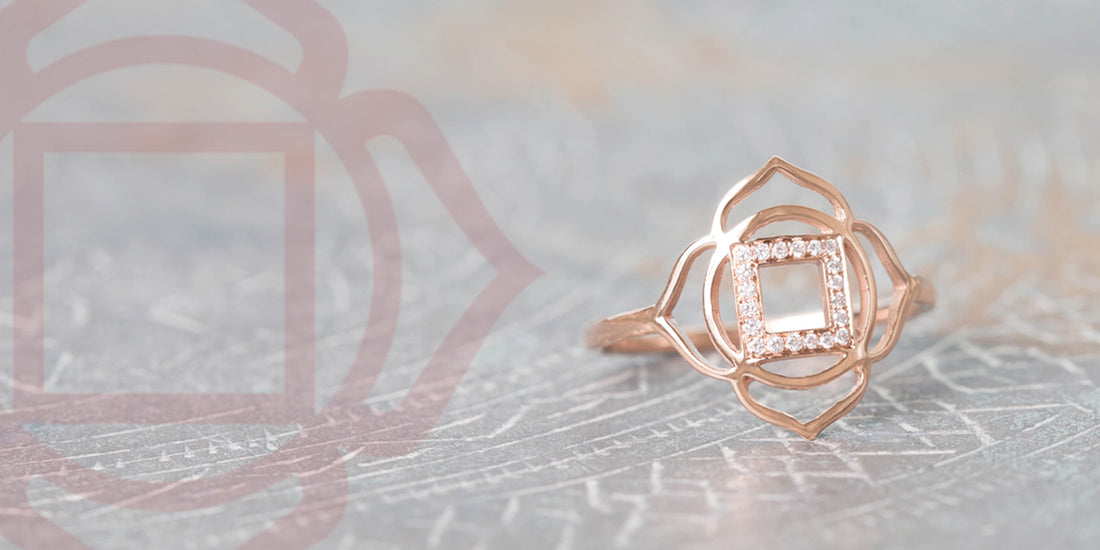
Chakra: Muladhara
Element: Earth
Location: Base of the spine
Color: Red
About: Survival, basic needs
Goals: Stability, grounding, physical health, prosperity
Demon: Fear
Practices: Grounding, strengthening the legs, cultivating stillness and stability
Mantra: Lam
What is the Muladhara chakra?
The Muladhara chakra, or Root chakra, is located at the base of the spine. It is symbolised by a lotus with four petals. Muladhara is the first layer of our identity and is associated with the physical body – the vessel of our soul.
Through this chakra we develop awareness of our body, learning to listen to it, protect it, and take care of it. Muladhara represents the centre of instincts, stability of mind and body, survival and self-sufficiency. It is about our basic needs and instincts, and also motivation and vitality for the physical body.
Muladhara chakra is about belonging. It is what grounds us. The foundation on which we build ourselves. Muladhara supports our confidence, strength and overall sense of well-being.
Like a plant rooted firmly in the soil, we are connected to our environment by being in contact with the earth. The soles of our feet anchor us, centre us. A stable grounding promotes a sense of security.
Besides enabling is to feel safe, roots are important for growth. Being grounded allows energy to rise so that we feel alive.
I am grounded and I am connected to the whole of Life, I belong, I am worthy, I am strong.
How does Muladhara chakra affect a person?
Muladhara is formed by our beginnings. We are shaped by the experiences of our first year in the world and even before that, when we existed in the womb. How our mother felt and lived during her pregnancy, and the way which our family cared for us when we were new-born – these things combined to influence this aspect of our identity.
The roots for all our future social interactions are laid down by the people who influence us at the very beginning. A baby treated with love and care will feel secure, enabling the development of healthy, stable roots. Without strong, supportive roots, we are vulnerable to the demon of the first chakra: fear.
A person with excessive Muladhara is inclined to hoard. A baby who is neglected or abandoned may grow into an adult who is fearful of losing things, prompting them to accumulate to much of everything – too many possessions, too much food or drink, too many targets, too many rules. It can be hard for them to let things go.
A person with deficient Muladhara lacks firm grounding. With flimsy roots and little connection to the land beneath your feet, it’s easy to lose your way – to turn inward and float away into an unearthly dream world that is insubstantial. The result may be disorganisation and lack of focus.
Remember that you belong on this earth, like the deeply rooted trees and other plants that make it beautiful.
How to strengthen the Muladhara chakra?
A balanced Muladhara enables us to strengthen our sense of belonging, feel secure in our actions and increase our sense of self-worth.
To strengthen the Muladhara you must accept your right to be here, and to protect and nurture the body that anchors you to your particular place on the ground.
Simple grounding exercises are one way to put this into practice; roll a tennis ball or foot roller along the soles of your feet to open this point of contact with the earth. Any kind of touch – such as massages – will also help reconnect with the sense and ownership of the physical body.
In yoga, stand in tadasana (mountain pose) which requires planting the feet into the mat and holding the body fully erect and present. Other poses include warriors poses and standing forward bend. All asanas which lead to trusting the ground below us as a base of support and way to direct energy downward.

Which Chakra is for you?
Try our CHAKRA TEST to discover which Chakra connects with you the most!
Check out our Chakra Collection HERE

